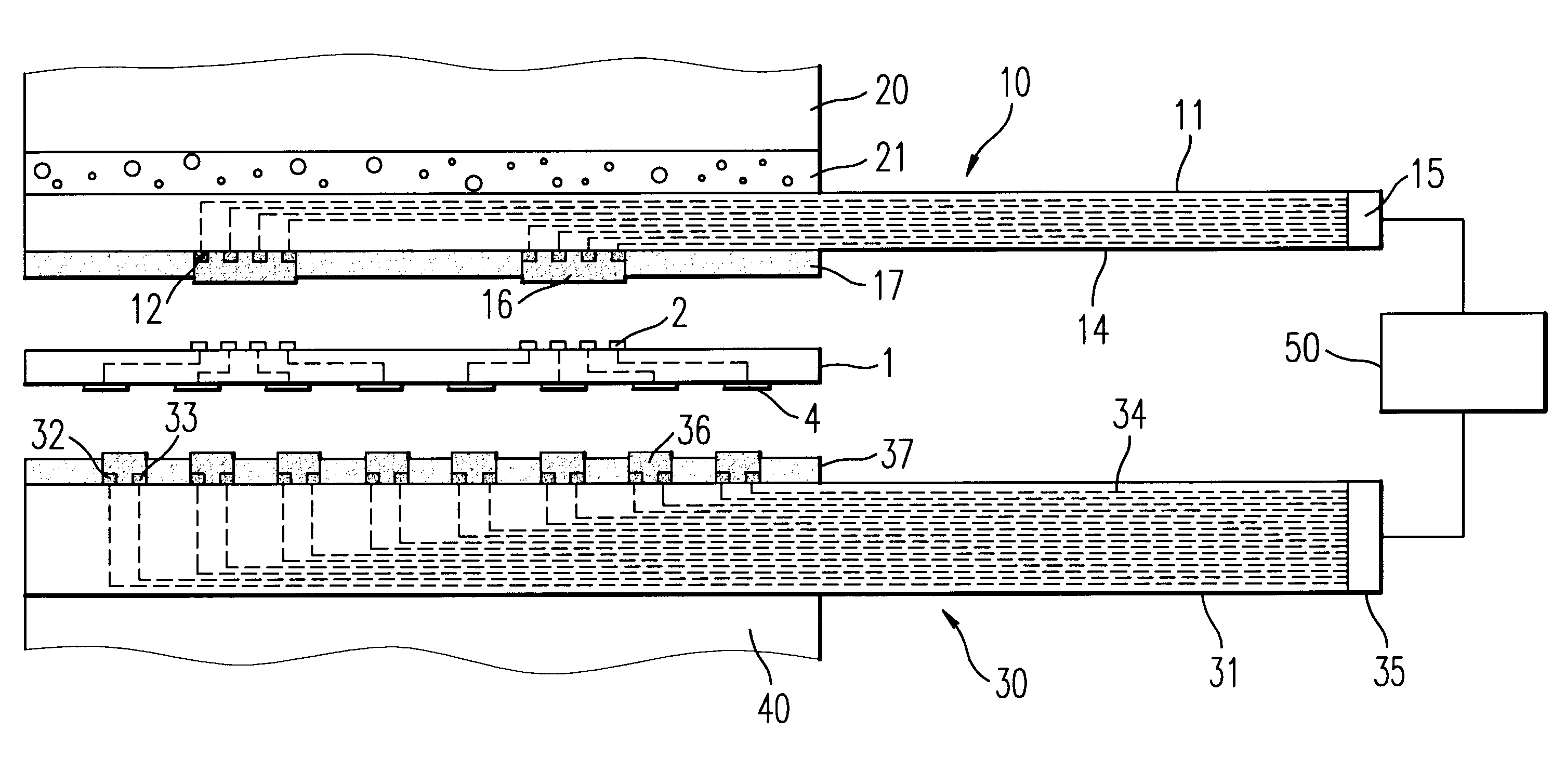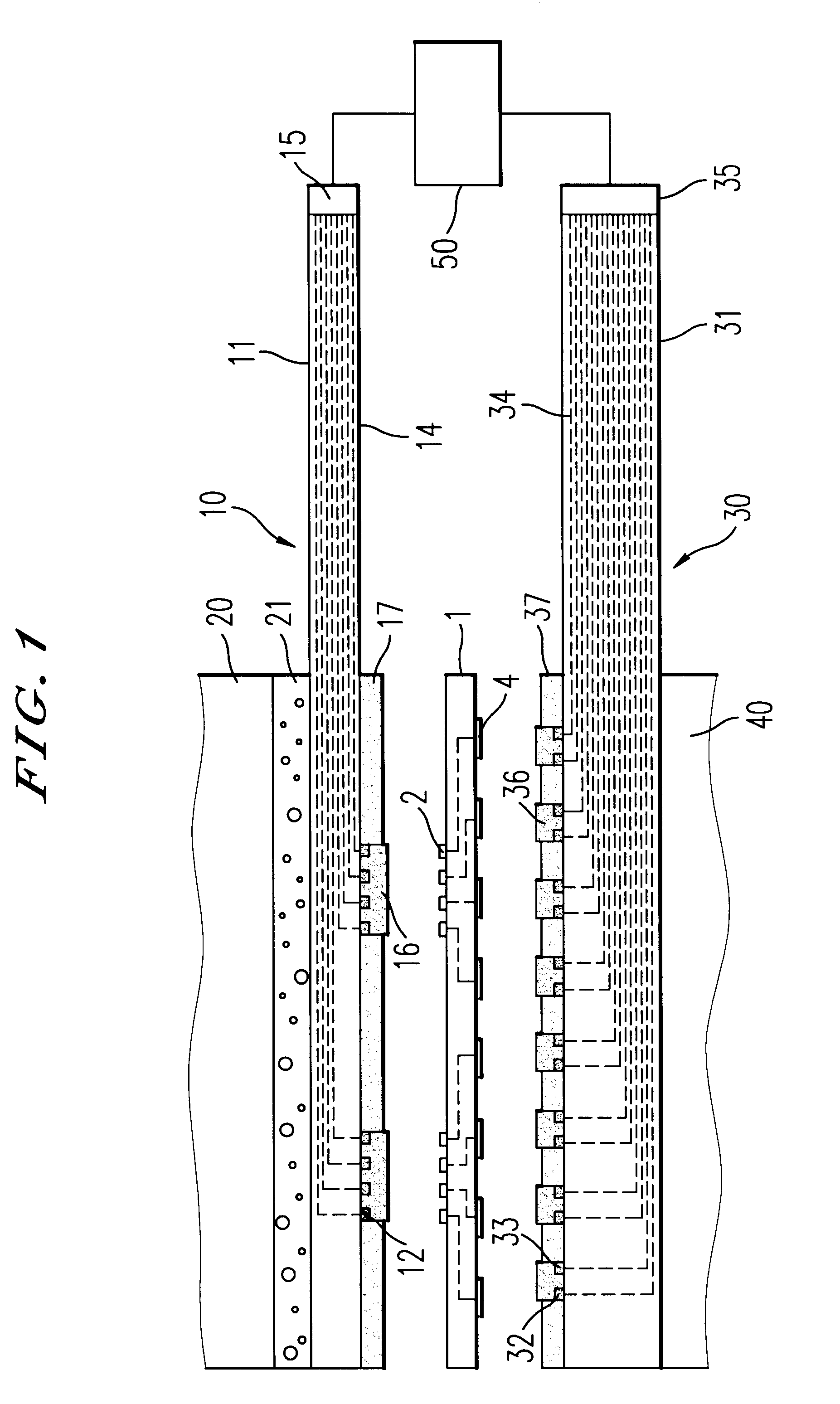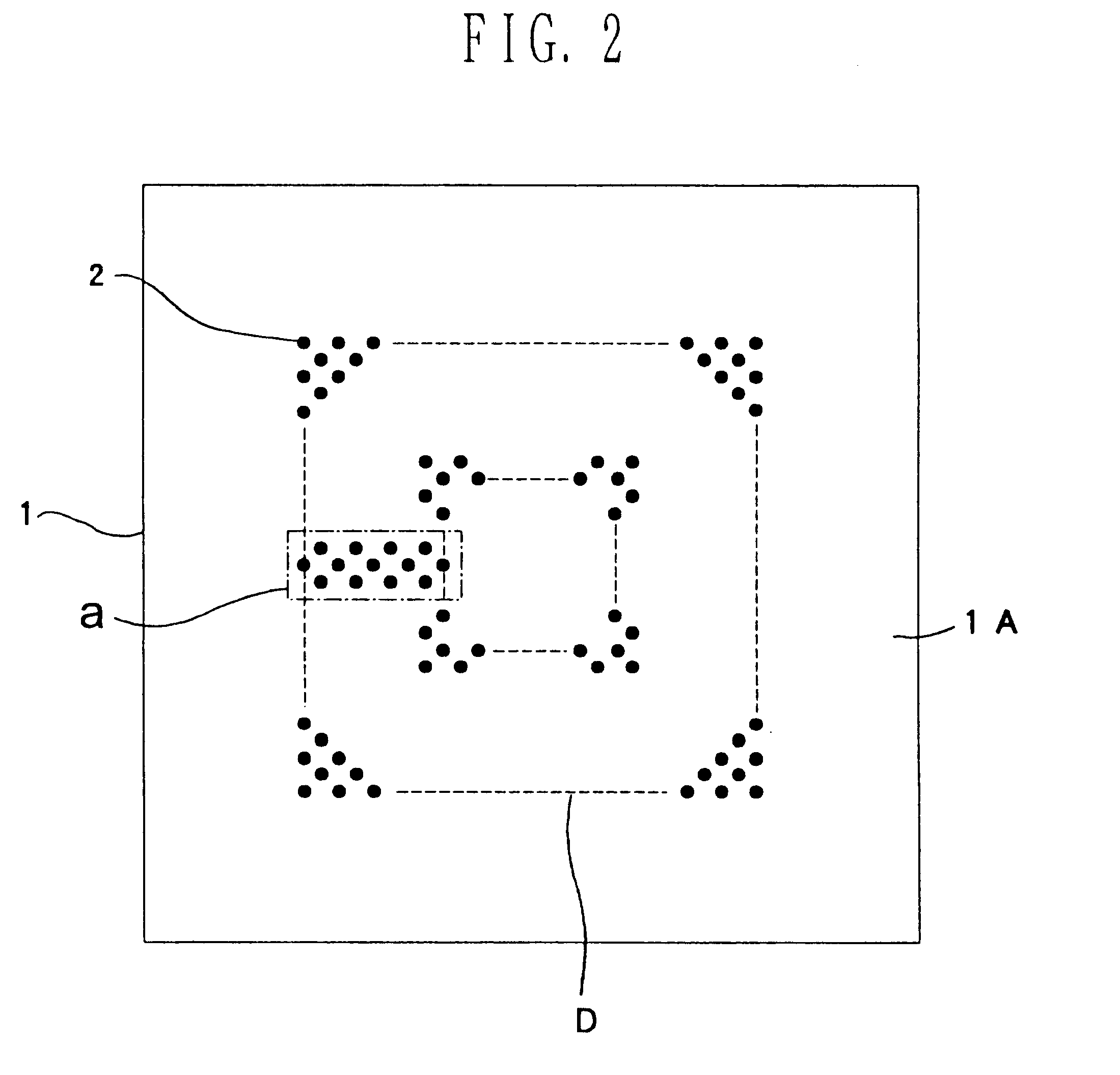Electric resistance measuring apparatus and method for circuit board
a technology of electric resistance and measuring apparatus, which is applied in the direction of resistance/reactance/impedence, individual semiconductor device testing, instruments, etc., can solve the problems of circuit board becoming unusable, unable to make higher yield of products afterward, and extremely difficult to achiev
- Summary
- Abstract
- Description
- Claims
- Application Information
AI Technical Summary
Benefits of technology
Problems solved by technology
Method used
Image
Examples
example a2
An electric resistance measuring apparatus was produced in the same manner as in Example A1 except that an upper-side adapter was produced under the following conditions in accordance with the construction illustrated in FIGS. 11 and 12.
[Inspection circuit board]
Dimensions of common connecting electrodes:
0.1 mm.times.1.5 mm
Clearance between common connecting electrodes:
0.22 mm
[Layer connector member]
Dimensions: 7 mm.times.7 mm; thickness: 0.2 mm
Conductive particles: material: nickel particles plated with gold on their surfaces; average particle diameter: 30 .mu.m; filling rate: 30% by volume
Elastic polymeric substance: silicone rubber
[Holding member]
Material: silicone rubber; thickness: 0.2 mm
Electric resistance between each dot electrode and its corresponding grid electrode in the same board to be inspected was measured in the same manner as in Example A1 except that in the electric resistance measuring apparatus described above, two of the common connecting electrodes were used as...
example b1
An electric resistance measuring apparatus for circuit boards was produced under the following conditions in accordance with the construction illustrated in FIG. 14.
(1) Upper-side adapter:
[Inspection circuit board]
Shape and dimensions of connecting electrodes:
circle, 0.1 mm in diameter
Clearance between connecting electrodes:
0.25 mm
[Connector member]
Thickness of insulating base: 200 .mu.m Thickness of short-circuit member: 50 .mu.m Projected height of front-side terminal: 30 .mu.m Outer diameter of conductor: 100 .mu.m Conductive particles: material: nickel particles plated with gold on their surfaces; average particle diameter: 30 .mu.m; filling rate: 30% by volume
Elastic polymeric substance: silicone rubber
Short-circuit member: a copper plate plated with nickel and gold in this order on its surface; thickness: 50 .mu.m
Electric resistance of conductor in the thickness-wise direction in a measurable state: 0.2 .OMEGA.
Electric resistance between adjacent front-side terminals: 0.02 .OM...
example b2
An electric resistance measuring apparatus for circuit boards was produced in the same manner as in Example B1 except that a connector member comprising a short-circuit member composed of a glass fiber reinforced epoxy resin sheet having a thickness of 50 .mu.m and a metal layer formed on the surface thereof, which was formed of copper and had a thickness of 8 .mu.m, was used in place of the connector member comprising the short-circuit member composed of a metal plate in accordance with the construction illustrated in FIG. 22, thereby measuring electric resistance between each dot electrode and its corresponding grid electrode in the same circuit board to be inspected. The result is shown in Table 2.
PUM
 Login to View More
Login to View More Abstract
Description
Claims
Application Information
 Login to View More
Login to View More - R&D
- Intellectual Property
- Life Sciences
- Materials
- Tech Scout
- Unparalleled Data Quality
- Higher Quality Content
- 60% Fewer Hallucinations
Browse by: Latest US Patents, China's latest patents, Technical Efficacy Thesaurus, Application Domain, Technology Topic, Popular Technical Reports.
© 2025 PatSnap. All rights reserved.Legal|Privacy policy|Modern Slavery Act Transparency Statement|Sitemap|About US| Contact US: help@patsnap.com



